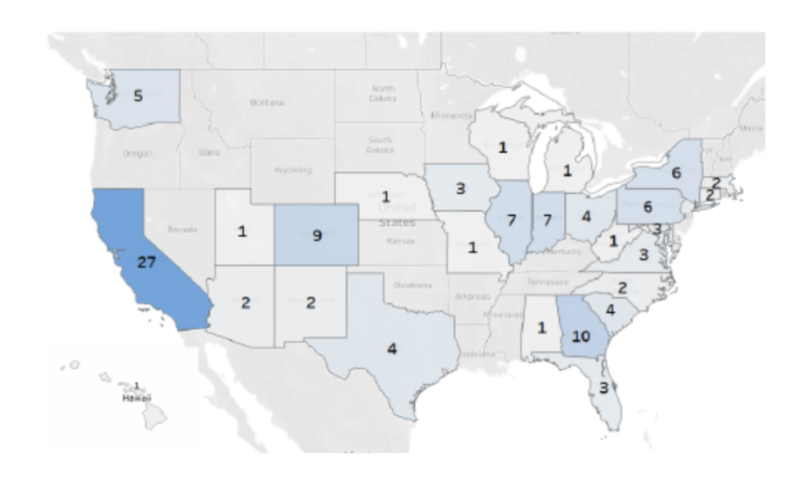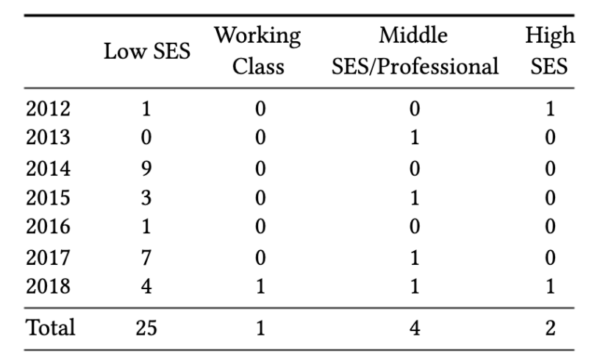Longitudinal Trends in K-12 Computer Science Education Research
In this post, Bishakha Upadhyaya provides highlights of our SIGCSE 2020 paper on trends in K-12 CS Education research (co-authored with Monica McGill and Adrienne Decker). For more details, watch her talk or read the paper.
Research in the field of Computer Science education is growing and so is the data and results obtained from it. Without a comprehensive look at them collectively, it can be difficult to understand the current longitudinal trends in the field. In order to identify the trends in the K-12 computing education research in the US, we conducted a longitudinal analysis of data collected from five different publication venues over the course of 7 years.
For the purpose of this analysis, we looked at the manually curated dataset on csedresearch.org with over 500 articles that focused on K-12 computing education from years 2012 to 2018. As the majority of the articles in the dataset were from the US, we only looked at research papers whose participants were also from the US. We then ran SQL queries on the dataset in order to extract the subsets of data that were later analyzed in Tableau and presented visually using graphs and tables.
Some of the major trends that we were interested in examining were:
- Locations of students/interventions studied
- Type of articles (e.g., research, experience, position paper)
- Program data (e.g., concepts taught, when activity was offered, type of activity, teaching methods),
- Student data (e.g., disabilities, gender, race/ethnicity, SES)
Results revealed that there has been an increasing shift in classroom activities from informal curriculum to formal curriculum. This shift suggests that more research is being conducted within classes offered during school hours, increasing the reach to more students with the availability of more labs, lectures and other teaching methods.
Trends also revealed that the majority of the research papers had student participants based in California. While this may seem reasonable given California is the most populous state in the US, this trend doesn’t follow for Texas, the second most populous state. There were only 4 papers that represented participants from Texas. This suggests that policies and other standards may have an influence over the computing activities and research in the state.

Our analysis revealed another longitudinal trend, various disparities in reporting the student demographics, particularly the socio-economic status (SES) of the students. For the purpose of this analysis, we considered information about free/reduced lunch as low SES if not explicitly reported in the paper. Only 32 of the articles analyzed reported information about students’ SES. Despite previous evidence showing that the SES of the student affects their academic achievement, the underreporting suggests that it is still not being considered in many research studies.

In a field with increasing efforts to increase the number of students from different backgrounds studying computer science, our research has shown considerable disparity in the research landscape of computing education. The lack of reporting makes it difficult for everyone from researchers and educators to policymakers to understand the results of these efforts, especially what needs improving. It is crucial to see how different interventions play out amongst different populations in order to implement and achieve the goals of CS for All.
 Bishakha Upadhyaya is a Senior at Knox College, majoring in Computer Science and minoring in Neuroscience. She was the President of ACM-W chapter at Knox for 2019/2020 school year and served as the CS Student Ambassador. She was involved in this research as a part of her summer research project. As a part of her senior research project, she was involved in exploring the enacted curriculum in Nepal, Pakistan, Bangladesh and Sri Lanka. She will be joining Bank of America as a Global Technology Analyst after graduation in Spring 2021.
Bishakha Upadhyaya is a Senior at Knox College, majoring in Computer Science and minoring in Neuroscience. She was the President of ACM-W chapter at Knox for 2019/2020 school year and served as the CS Student Ambassador. She was involved in this research as a part of her summer research project. As a part of her senior research project, she was involved in exploring the enacted curriculum in Nepal, Pakistan, Bangladesh and Sri Lanka. She will be joining Bank of America as a Global Technology Analyst after graduation in Spring 2021.

Comments are closed